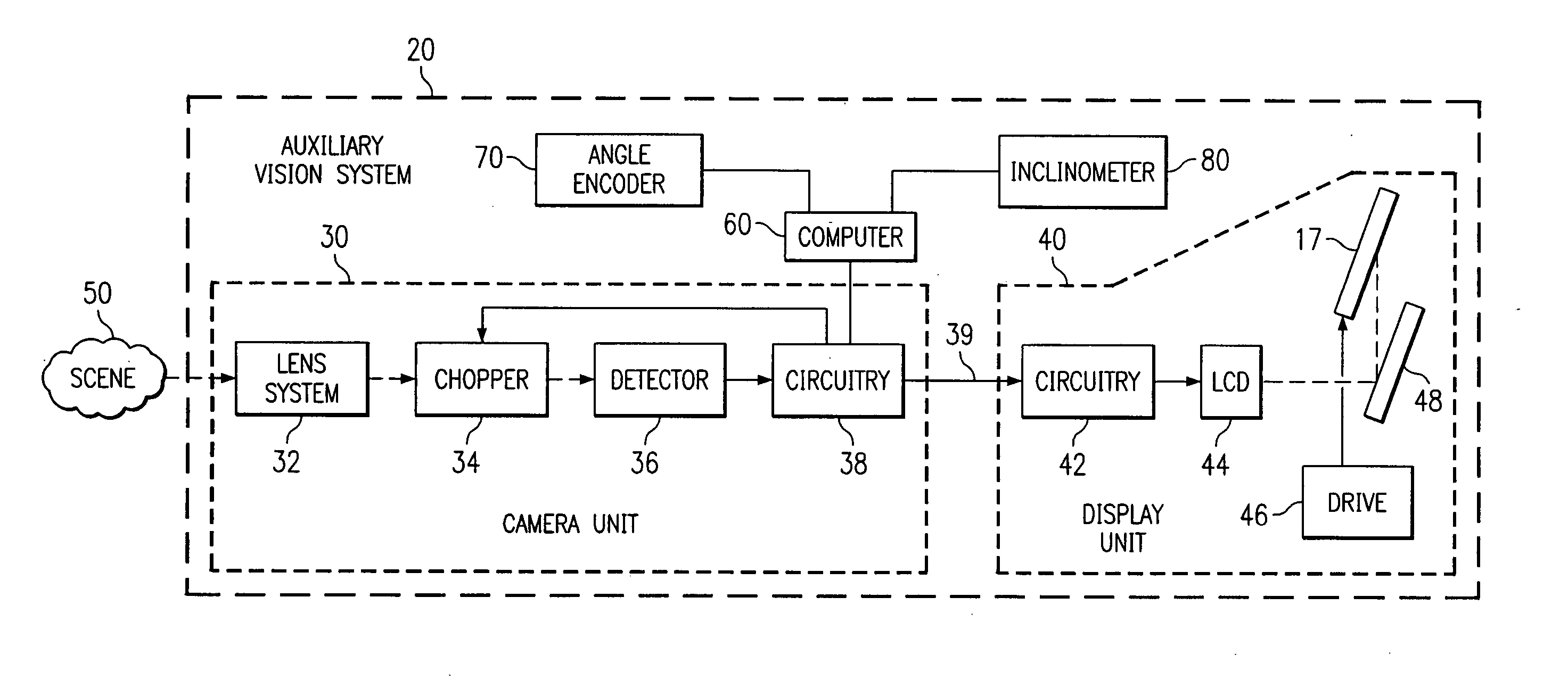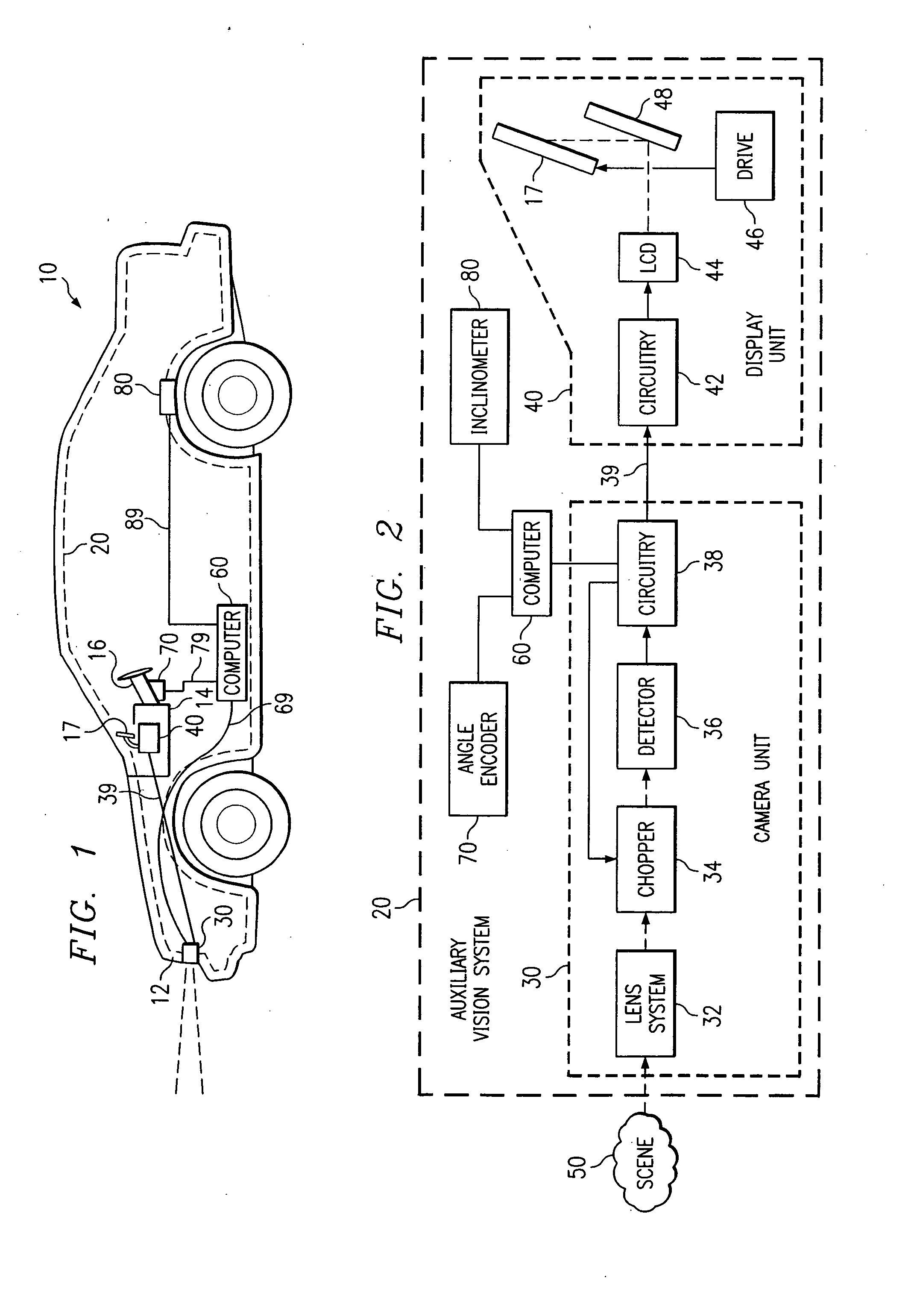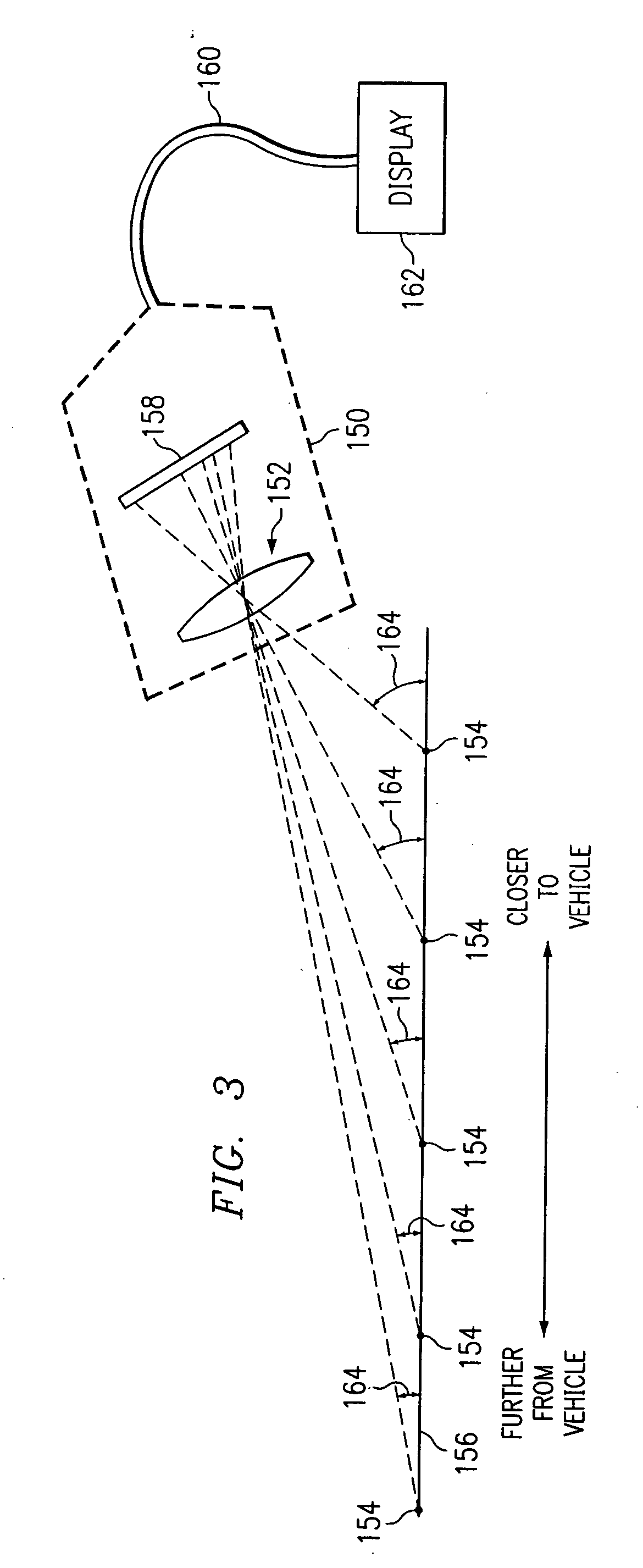Method and system for displaying an image
a technology of image and method, applied in the field of vision systems, can solve the problems of poor illumination of the image, high risk of resulting accident, and inability to detect deer, and achieve the effect of reducing or eliminating at least some of the disadvantages and problems
- Summary
- Abstract
- Description
- Claims
- Application Information
AI Technical Summary
Benefits of technology
Problems solved by technology
Method used
Image
Examples
Embodiment Construction
FIG. 1 is a diagrammatic view of a vehicle 10 incorporating one embodiment of an auxiliary vision system 20 in accordance with an embodiment of the present invention. The auxiliary vision system 20 includes a camera unit 30, which in the illustrated embodiment is mounted at the front of vehicle 10, in the middle of a front grill 12. The camera unit 30 is electrically coupled at 39 to a display unit 40, which is also a part of the auxiliary vision system 20. The display unit 40 is of a type that is commonly known as a head-up display (HUD). The display unit 40 is mounted within a recess of a dashboard 14 of the vehicle 10, and can project a visible image for reflection by a fold mirror of display unit 40 onto a display 17 for viewing by the driver. Display 17 is recessed within dashboard 14 when auxiliary vision system 20 is not in use.
The camera unit 30 is also electrically coupled to a computer 60 at 69. The computer 60 is also part of the auxiliary vision system 20 and provides i...
PUM
 Login to View More
Login to View More Abstract
Description
Claims
Application Information
 Login to View More
Login to View More - R&D
- Intellectual Property
- Life Sciences
- Materials
- Tech Scout
- Unparalleled Data Quality
- Higher Quality Content
- 60% Fewer Hallucinations
Browse by: Latest US Patents, China's latest patents, Technical Efficacy Thesaurus, Application Domain, Technology Topic, Popular Technical Reports.
© 2025 PatSnap. All rights reserved.Legal|Privacy policy|Modern Slavery Act Transparency Statement|Sitemap|About US| Contact US: help@patsnap.com



